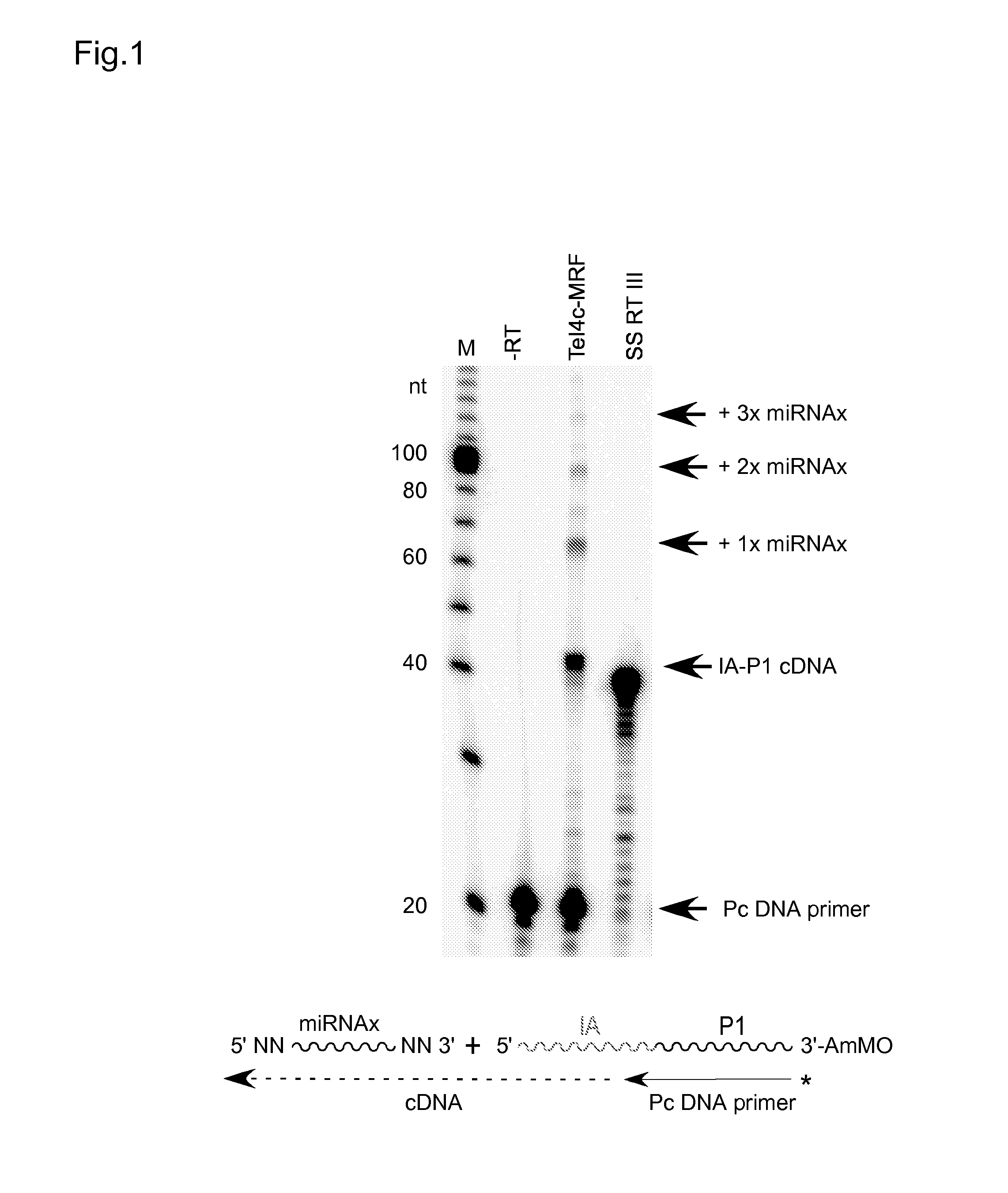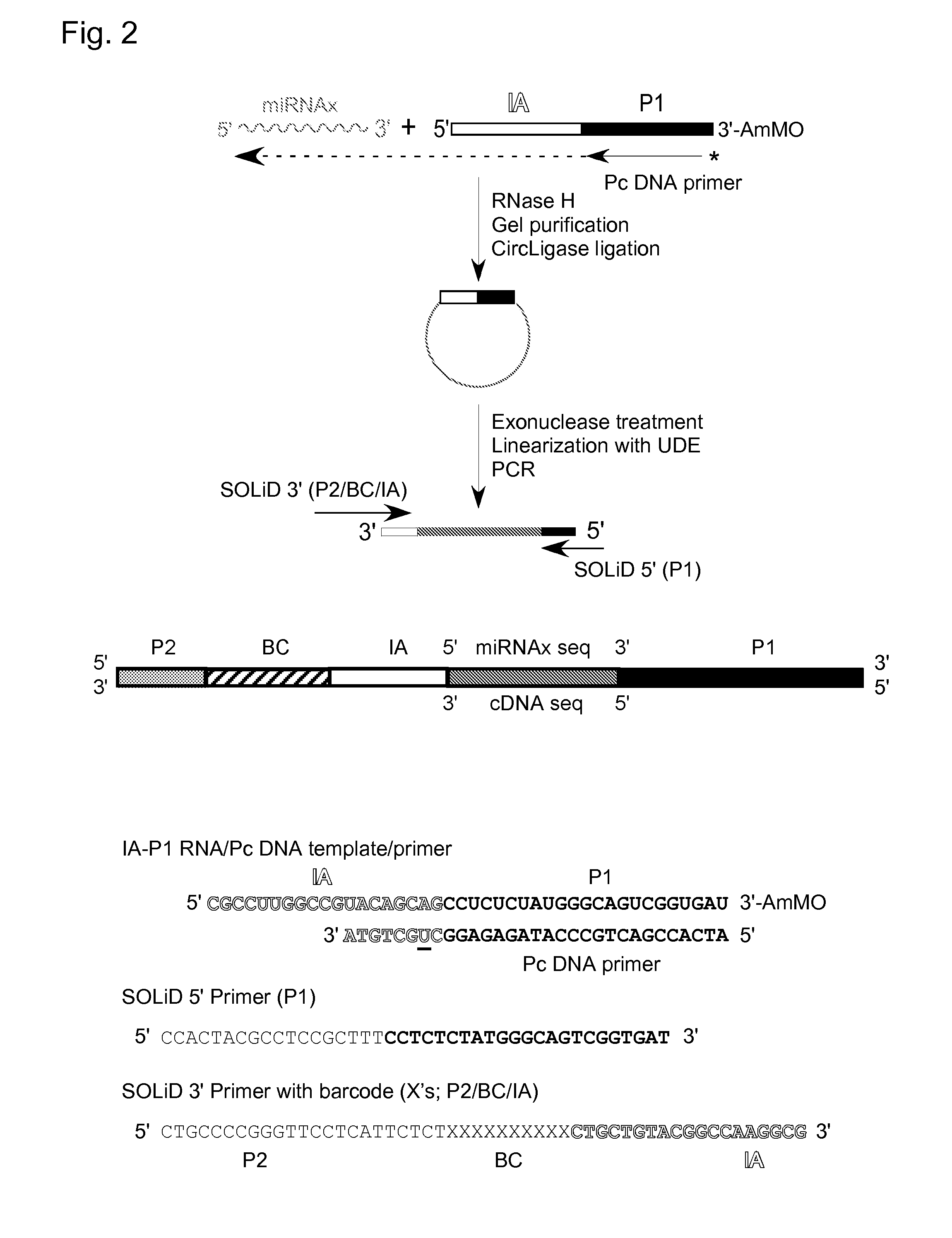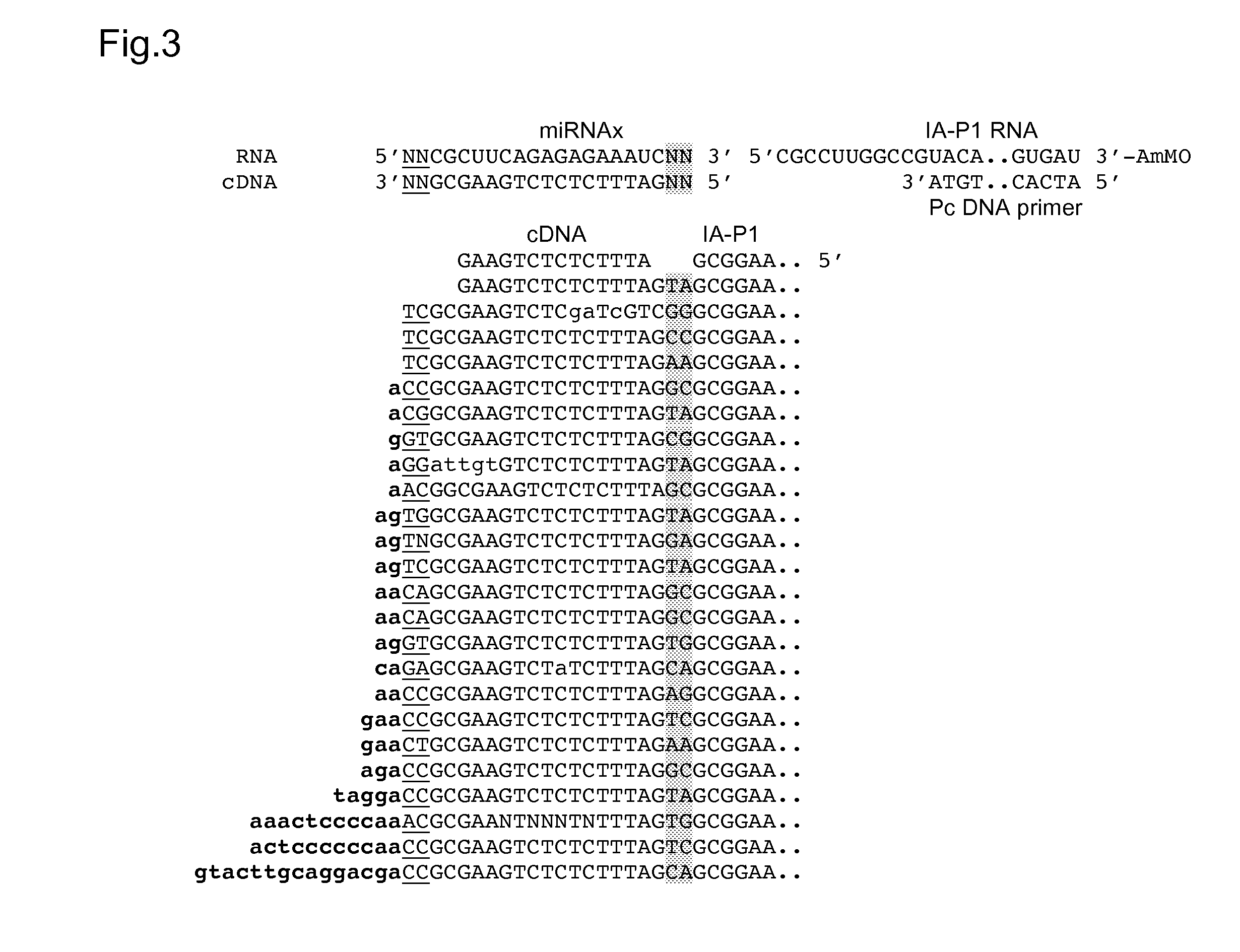Use of template switching for DNA synthesis
- Summary
- Abstract
- Description
- Claims
- Application Information
AI Technical Summary
Benefits of technology
Problems solved by technology
Method used
Image
Examples
example 1
Preparation of TeI4c-MRF and GsL-IIc RTs
[0056]The expression plasmid pMalE-RF-TeI4c contains the RT ORF of the Thermosynechococcus elongatus TeI4c group II intron with a fused N-terminal MalE tag cloned behind the tac promoter in pMal-c2t, a derivative of pMal-c2x (New England Biolabs®, Ipswich, Mass.) with a TEV protease-cleavage site in place of the factor Xa site (Kristelly et al. 2003). The plasmid was constructed by PCR amplifying the TeI4c RT ORF of the TeI4c intron cloned in pUC19 (Mohr et al. 2010) with primers that append restriction sites (EcoRI and PstI), and then cloning the PCR products into the corresponding sites of pMal-c2t. The TEV-protease cleavable linker (TVDEALKDAQTNS3N10LENLYFQG) (SEQ ID NO: 3) was replaced with a rigid linker (TVDAALAAAQTNAAAAA) (SEQ ID NO: 4) by the Quick Change PCR procedure, using Accuprime polymerase (Invitrogen™; Makarova et al. 2000).
[0057]pMalE-GsI-IIC was constructed by PCR amplifying the RT ORFs from Geobacillus stearothermophilus str...
example 2
Preparation of the L1.LtrB Group II Intron RT (LtrA Protein)
[0060]The LtrA protein was expressed in E. coli BL21(DE3) from the plasmid pMAL-LtrA, which contains the LtrA ORF (Mills et al. 1996) cloned downstream of a tac promoter and Φ10 Shine-Dalgarno sequence between BamHI and HindIII of the protein-expression vector pMAL-c2t (see above). A starter culture of cells was grown in LB medium overnight at 37° C. and used to inoculate ultra yield flasks containing 0.5 L of LB medium, which were autoinduced by growing at 37° C. for 3 h followed by 18° C. for 24 h (Studier 2005). Cells were harvested by centrifugation (Beckman JLA-8.1000; 4,000×g, 15 min, 4° C.) and resuspended in 1 M NaCl, 20 mM Tris-HCl pH 7.5, 20% glycerol, and 0.1 mg / ml lysozyme (Sigma-Aldrich®, St. Louis, Mo.). Lysis was achieved through 3 freeze-thaw cycles and sonication as described above for preparation of the TeI4c-MRF RT. After pelleting cell debris (Beckman Coulter™ JA-14 rotor, 10,000 rpm, 30 min, 4° C.), nuc...
example 3
cDNA Cloning and Sequencing Via Group II Intron RT Template-Switching
[0061]Reverse transcription reactions with the TeI4c-MRF RT were performed by incubating the purified protein with artificial oligonucleotide substrates synthesized by Integrated DNA Technologies® (IDT; Coralville, Iowa). In some experiments, DNA primers were 5′-end labeled with [γ-32P]-ATP (10 Ci / mmol; Perkin-Elmer®) using phage T4 polynucleotide kinase (New England Biolabs®) according to the manufacturer's protocol. Primers were annealed to RNA template strands by mixing at a 1.1:1 molar ratio in 10 mM Tris-HCl, pH 7.5, 1 mM EDTA, heating to 82° C. for 2 min, and then cooling to room temperature over 10 min using a PCR machine (Gene Amp 9700, Life Technologies™ Corporation, Carlsbad, Calif.). Reverse transcription reactions were done in 10-40 μl of reaction medium under conditions specified in the Figure Legends. The reactions were initiated by adding the enzyme and terminated by adding 125 mM EDTA, 0.05% SDS fol...
PUM
 Login to View More
Login to View More Abstract
Description
Claims
Application Information
 Login to View More
Login to View More - R&D
- Intellectual Property
- Life Sciences
- Materials
- Tech Scout
- Unparalleled Data Quality
- Higher Quality Content
- 60% Fewer Hallucinations
Browse by: Latest US Patents, China's latest patents, Technical Efficacy Thesaurus, Application Domain, Technology Topic, Popular Technical Reports.
© 2025 PatSnap. All rights reserved.Legal|Privacy policy|Modern Slavery Act Transparency Statement|Sitemap|About US| Contact US: help@patsnap.com



